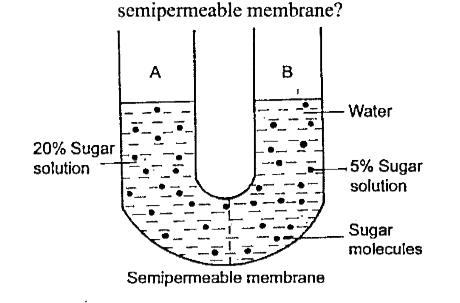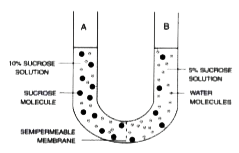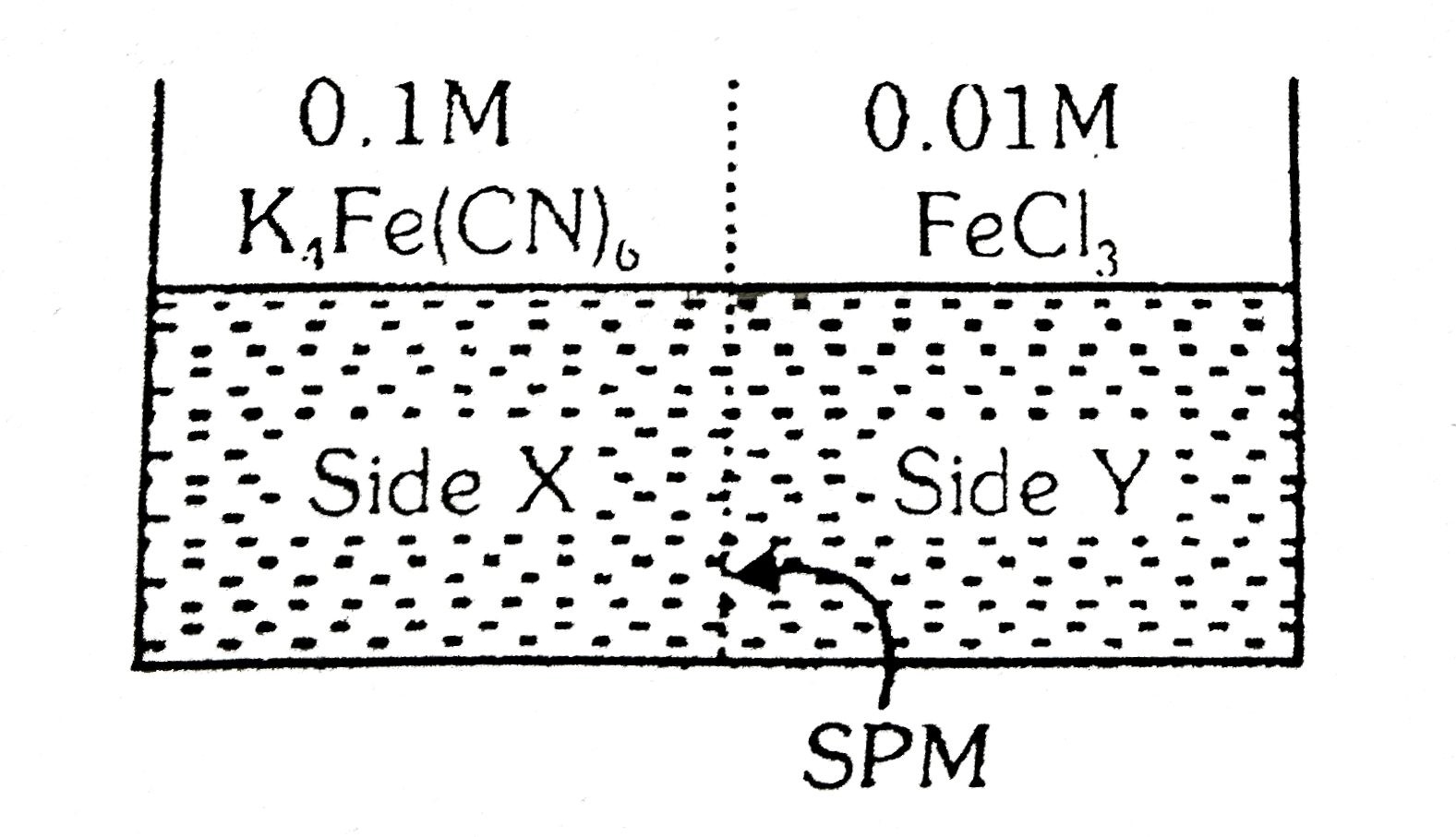Selectively permeable and semipermeable membrane
Step-by-Step Text Solution
1. Definition of Membranes:
- Semi-permeable Membrane: A membrane that allows only certain substances to pass through while blocking others. It does not allow solutes to pass through.
- Selectively Permeable Membrane: A membrane that allows certain solutes to pass through to a limited extent, while still blocking others.
2. Functionality:
- Semi-permeable Membrane: Acts as an ideal partition between two osmotically active solutions, preventing solute movement entirely.
- Selectively Permeable Membrane: Acts as an imperfect partition, allowing some solutes to pass through, even in hypertonic solutions, which can lead to de-plasmolysis of cells.
3. Solvent and Solute Entry:
- Semi-permeable Membrane: Permits the entry of only one solvent (usually water).
- Selectively Permeable Membrane: Permits the entry of both solvents and selected solutes to a limited extent.
4. Existence in Biological Systems:
- Semi-permeable Membrane: Does not exist in the biological world.
- Selectively Permeable Membrane: Exists in biological systems, with examples including all biological membranes.
5. Applications:
- Semi-permeable Membrane: Used in dialysis, maintenance of turgidity, and measurement of osmotic potential.
- Selectively Permeable Membrane: Useful in maintaining turgidity while retaining the ability to absorb solutes.
6. Examples:
- Semi-permeable Membrane: Examples include egg membranes and cellophane.
- Selectively Permeable Membrane: An example is the plasmalemma (cell membrane).
Summary of Differences:
| Feature | Semi-permeable Membrane | Selectively Permeable Membrane |
|----------------------------------|----------------------------------------|----------------------------------------|
| Solute Passage | Does not allow solutes | Allows selected solutes |
| Partition Functionality | Acts as an ideal partition | Acts as an imperfect partition |
| Solvent Entry | Permits entry of only one solvent | Permits entry of both solvents |
| Biological Existence | Does not exist in biological world | Exists in biological systems |
| Applications | Used in dialysis and osmotic potential | Maintains turgidity and solute absorption |
| Examples | Egg membrane, cellophane | Plasmalemma (cell membrane) |
- Semi-permeable Membrane: A membrane that allows only certain substances to pass through while blocking others. It does not allow solutes to pass through.
- Selectively Permeable Membrane: A membrane that allows certain solutes to pass through to a limited extent, while still blocking others.
- Semi-permeable Membrane: Acts as an ideal partition between two osmotically active solutions, preventing solute movement entirely.
- Selectively Permeable Membrane: Acts as an imperfect partition, allowing some solutes to pass through, even in hypertonic solutions, which can lead to de-plasmolysis of cells.
- Semi-permeable Membrane: Permits the entry of only one solvent (usually water).
- Selectively Permeable Membrane: Permits the entry of both solvents and selected solutes to a limited extent.
- Semi-permeable Membrane: Does not exist in the biological world.
- Selectively Permeable Membrane: Exists in biological systems, with examples including all biological membranes.
- Semi-permeable Membrane: Used in dialysis, maintenance of turgidity, and measurement of osmotic potential.
- Selectively Permeable Membrane: Useful in maintaining turgidity while retaining the ability to absorb solutes.
- Semi-permeable Membrane: Examples include egg membranes and cellophane.
- Selectively Permeable Membrane: An example is the plasmalemma (cell membrane).
| Feature | Semi-permeable Membrane | Selectively Permeable Membrane |
|----------------------------------|----------------------------------------|----------------------------------------|
| Solute Passage | Does not allow solutes | Allows selected solutes |
| Partition Functionality | Acts as an ideal partition | Acts as an imperfect partition |
| Solvent Entry | Permits entry of only one solvent | Permits entry of both solvents |
| Biological Existence | Does not exist in biological world | Exists in biological systems |
| Applications | Used in dialysis and osmotic potential | Maintains turgidity and solute absorption |
| Examples | Egg membrane, cellophane | Plasmalemma (cell membrane) |
Topper's Solved these Questions
Similar Questions
Selectively (differentially ) permeable membrane is that which allows
View SolutionA semipermeable membrane allows
View SolutionThe selectively permeable nature of cell membrane is mainly contributed by
View SolutionStudy the set-up given in the diagram and answer the following questions:

Why is the membrane called semipermeable membrane?
View SolutionGiven below is the diagram of an experiment just at the start. Study the diagram carefully and answer the following questions :

Why is the membrane separating the two solutions labelled as semipermeable membrane?
View SolutionFeCI3 on reaction with K4[Fe(CN)6] in aqueous solution gives blue colour.

These are separated by a semipermeable membrane AB as shown. Due to osmosis there is:
View SolutionFeCI3 on reaction with K4[Fe(CN)6] in aqueous solution gives blue colour.

These are separated by a semipermeable membrane AB as shown. Due to osmosis there is:
View SolutionFeCl3 on reaction with K4[Fe(CN)6] in aqueous solution gives blue colour.

These are separated by a semipermeable membrane AB as shown. Due to osmosis there is:
View SolutionFill in the blanks :
.............. takes place when two solutions of different concentrations are separated by a semi permeable membrane.
View SolutionFill in the blanks :
................... takes place when two solutions of different concentrations are separated by a semi permeable membrane.
View Solution
